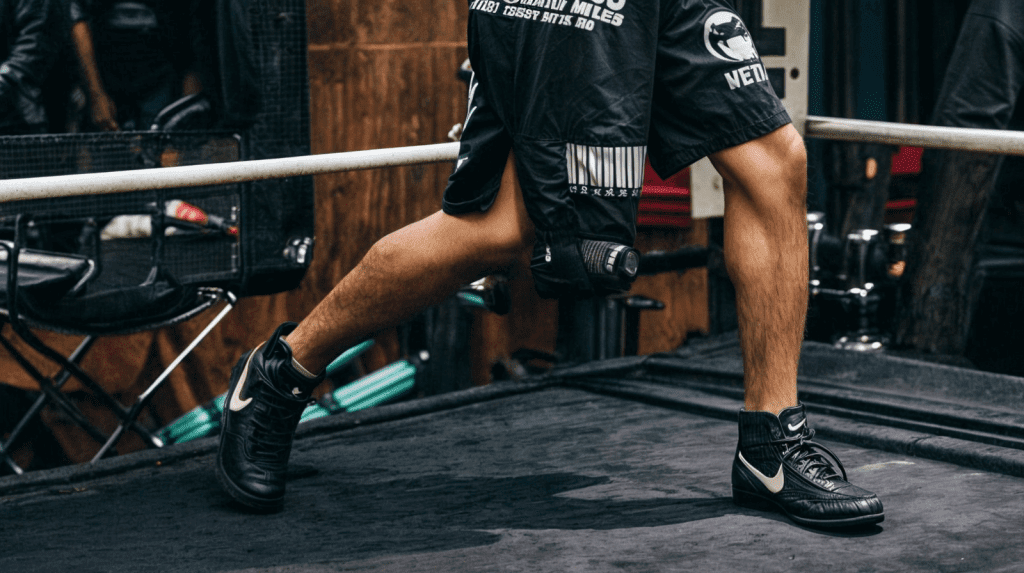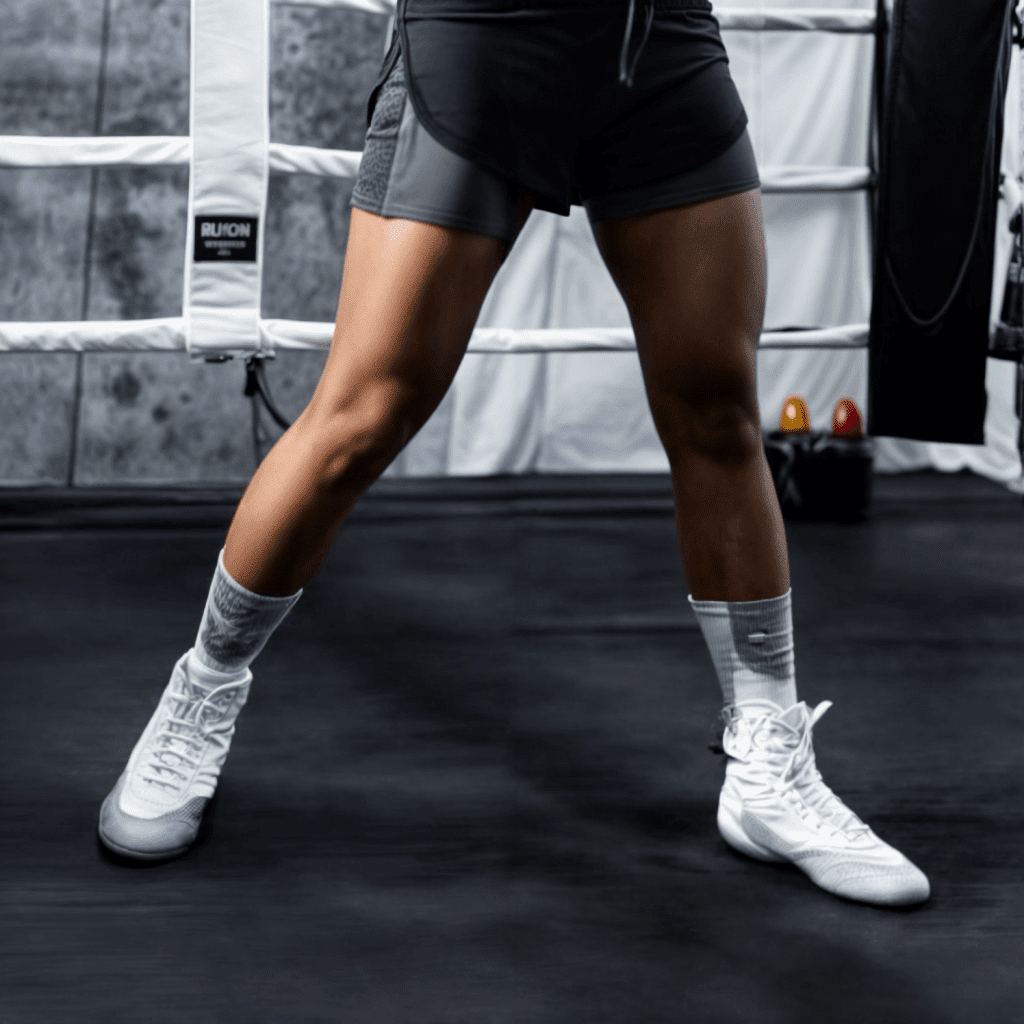Introduction
Boxing footwork is a fundamental skill that separates good fighters from great ones. It involves the precise and controlled movement of the feet to maintain balance, positioning, and power. Proper footwork not only allows boxers to evade punches but also enables them to deliver powerful strikes. In this guide, we’ll delve into the intricacies of boxing footwork, exploring various techniques and drills to help you enhance your skills in the ring.

1. Understanding Boxing Footwork
Boxing footwork is the cornerstone of effective offense and defense. It involves the precise movement of the feet to maintain optimal balance, positioning, and distance from the opponent. In the historical context, fighters like Muhammad Ali revolutionized footwork with their unique styles. Modern techniques continue to evolve, integrating elements from various martial arts.
2. Basic Footwork Techniques
Stance and Guard
A proper stance provides stability and allows for quick movement. The lead foot should be slightly pointed inward, with knees slightly bent and weight evenly distributed.
Pivoting
Pivoting on the ball of the lead foot allows for quick changes in direction, essential for both defense and setting up punches.
Sliding
Sliding involves moving the feet without lifting them off the ground, maintaining constant contact with the surface to ensure balance.
Shuffling
Shuffling is a basic movement that helps in advancing or retreating while maintaining a balanced stance.
3. Advanced Footwork Techniques
Lateral Movement
Lateral movement involves side-to-side steps, crucial for dodging attacks and creating angles for counterattacks.
In-and-Out Movement
In-and-out movement helps in closing the distance for striking and quickly retreating to avoid counters.
Angling
Angling refers to moving to the side to create an advantageous position, often leading to openings in the opponent’s defense.
Switching Stance
Switching stance can confuse opponents and provide different angles of attack, adding unpredictability to your movements.
4. Footwork Drills
Shadow Boxing
Shadow boxing helps in practicing footwork while visualizing an opponent. It allows for experimentation with different movements and combinations.
Ladder Drills
Ladder drills improve agility and coordination, essential for quick and precise footwork.
Cone Drills
Cone drills are excellent for practicing lateral movement and changes in direction.
Sparring Drills
Sparring drills help in applying footwork techniques in a realistic setting, allowing for adjustments based on an opponent’s movements.
5. Common Mistakes in Footwork
Overstepping
Overstepping can lead to loss of balance and make you vulnerable to counters.
Crossing Feet
Crossing feet is a common mistake that can compromise balance and mobility.
Lack of Balance
Maintaining balance is crucial for both offense and defense. A lack of balance can result in missed opportunities and increased vulnerability.
6. Improving Agility and Speed
Plyometric Exercises
Plyometric exercises like box jumps and lateral hops improve explosive power and agility.
Speed Drills
Speed drills focus on quick foot movement, enhancing your ability to evade and counter.
Agility Ladder
The agility ladder is a versatile tool for improving foot speed and coordination.
7. Footwork in Defense
Evasion Techniques
Evasion techniques like slipping, bobbing, and weaving are crucial for avoiding punches.
Blocking and Parrying

Effective blocking and parrying depend on precise foot positioning, allowing for quick counters.
8. Footwork in Offense
Setting Up Punches
Proper footwork helps in setting up punches, ensuring maximum power and accuracy.
Creating Angles
Creating angles can open up new lines of attack, making it difficult for opponents to defend.
9. The Role of Balance in Footwork
Center of Gravity
Maintaining a low center of gravity helps in staying balanced and ready to react.
Maintaining Stability
Stability is key to both absorbing punches and delivering powerful strikes.
10. Footwork for Different Boxing Styles
Out-Boxer
Out-boxers rely on quick footwork to maintain distance and avoid exchanges.
Pressure Fighter
Pressure fighters use aggressive footwork to close the distance and overwhelm opponents.
Counterpuncher
Counterpunchers use footwork to bait opponents and create openings for counterattacks.
11. Case Studies of Great Boxers
Muhammad Ali
Ali’s “float like a butterfly” style showcased the importance of agile footwork.
Sugar Ray Leonard
Leonard’s speed and agility made him a master of footwork.
Floyd Mayweather Jr.
Mayweather’s defensive footwork allowed him to evade punches and counter with precision.
12. Expert Insights
Quotes from Trainers
“Footwork is the foundation of boxing. Without it, you’re just a punching bag.” – Freddie Roach
Professional Advice
“Always keep your weight centered. It allows for quick movements in any direction.” – Teddy Atlas
13. Training Footwear and Equipment
Choosing the Right Shoes
Boxing shoes should provide good ankle support and grip, allowing for quick and precise movements.
Essential Gear
Proper gear, including gloves and headgear, ensures safety during training and sparring.
14. Conclusion
Boxing footwork is a vital skill that enhances both offensive and defensive capabilities. By mastering various techniques and drills, boxers can improve their agility, balance, and overall performance in the ring. Whether you’re a beginner or an experienced fighter, continuous practice and attention to footwork can make a significant difference in your boxing journey.
FAQ
What is the most important aspect of boxing footwork?
Maintaining balance and positioning is the most crucial aspect. This allows for quick reactions, effective defense, and powerful offense.
How can I improve my footwork?
Consistent practice of drills such as shadow boxing, ladder drills, and cone drills can significantly improve footwork. Focusing on maintaining balance and coordination is key.
What are some common footwork drills?
Common drills include shadow boxing, ladder drills, cone drills, and sparring drills. These exercises enhance agility, speed, and coordination.
How does footwork differ between amateur and professional boxing?
In amateur boxing, footwork focuses on speed and agility for quick points, while professional boxing emphasizes power and endurance, requiring a more balanced approach to movement.
What are the common footwork mistakes in boxing?
Common mistakes include overstepping, crossing feet, and a lack of balance. These errors can lead to vulnerabilities and missed opportunities.
